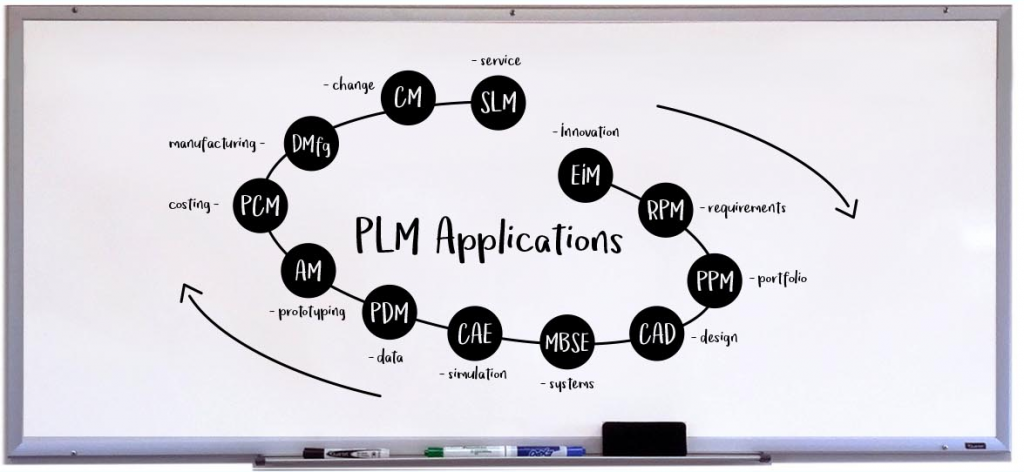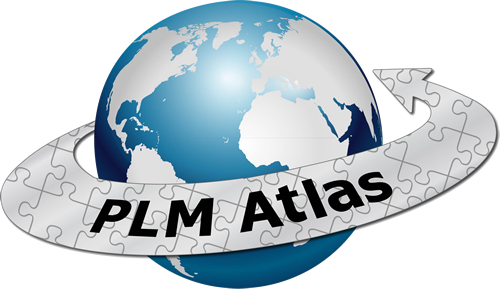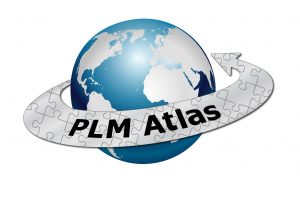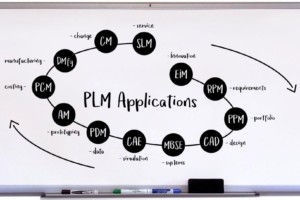The three most frequent questions we hear about The Product Lifecycle Management Ecosystem Atlas – “The PLM Atlas” – are what exactly is it, what prompted its creation, and what are the real-world uses for it. In this series of posts we’ll address each of these topics, beginning with what it is, and equally important, what it is not.
The PLM Atlas provides the most comprehensive digital directory of the global Product Lifecycle Management ecosystem available on the Internet or in print. In one location, the PLMatlas.com website provides a comprehensive searchable directory including market glossary, terminology lexicon, classification taxonomy, business history, and relationship topology of the global $60B PLM market.
The PLM Atlas database provides coverage for nearly 1,000 entities that encompass the technologies, market segments, software providers, consultancies, user industries, partnerships, alliances, events, publications, subject matter experts, and other resources within the PLM ecosystem.
There are over 100 different technology spaces and solution software markets that populate and power the global PLM ecosystem. These include well known sectors like Product Data Management (PDM), Computer Aided Design (CAD), Product Portfolio Management (PPM) and Computer Aided Engineering (CAE) as well as newer technology spaces like 3D Printing (3DP), Model Based Systems Engineering (MBSE), Enterprise Innovation Management (EIM), Digital Manufacturing (DMfg), and dozens more. All of the technology markets we reference in The PLM Atlas are detailed HERE.

Many thousands of professionals and consultants work in PLM-related fields across the globe. Millions more around the world employ the technologies and use the software tools in these market segments that have produced much innovation and progress. Learn more about these professionals, consultants and industrial users by starting HERE.
As PLM-related markets have grown, the relationships, partnerships, alliances, and communities formed have become a highly-dynamic ecosystem of interconnecting and often interdependent resources. The site was created to serve as a guide or map to this ecosystem for working professionals, industrial users, software buyers, market researchers, developers, marketers, investors, educators, students, and consultants from around the world. As such, access to PLMatlas.com is an open and free offering.
One of the unique features of The PLM Atlas is the ability for users to drill down in searches for professional resources to a unprecedented level of granularity. As example, imagine you are an engineer working in the aerospace industry who is seeking to identify configuration management software tools from an independent solution provider in Europe or America that is highly focused and knowledgeable on serving this specific PLM application space and industry from your geographic region. Additionally, you seek to find an independent subject matter expert PDM or CM consultant not associated with a vendor to assist with requirements specification, software evaluation and implementation.
Most importantly, you want to do this without having to spend hours preforming search engine bingo where your inquiries are often swamped with ads, tracking cookies, click bait, chat bots, dummy sites, fake reviews, and results “selected” for you because the search engines were paid to do so and think they know what you want better than you do.
Or perhaps you are a job seeker, student, investor, or marketing manager performing research on a market segment for prospective employers, partners, or business opportunities. There are many additional use cases of the atlas that will be profiled in a future news post. Until then try a search of your own here at Directory Search.
The PLM Atlas Exposition feature is a digital exhibition and virtual tradeshow that classifies and showcases over 500 solution software and consulting service providers which populate the technology markets within the global PLM ecosystem. In one click without performing a search a site visitor can call up an unbiased list of all providers within a specific market segment. Profiles of each entry may then be easily accessed and researched.
Similar to other Wiki-like resources, the atlas was not created to sell subscriptions, perform advertising, track visitors, or monetize private data. Instead, it was born from the recognition that a professional resource like this was missing in our industry and much needed within our profession. We then went about building it over a period of several years without regard to where the project might lead once completed and user feedback was received.
The content and data powering the PLMatlas.com website has been collected from much research, many conversations, and numerous collaborations across the global PLM community over a career spanning several decades. We thank and honor thousands of professionals from around the world for their contributions to the continuous advancement and financial growth of ever-expanding ecosystem of PLM-related software solutions and consulting services.
Admittedly, the website is still a work in progress, and always will be as the dynamic PLM ecosystem is ever-changing and expanding. We welcome feedback, recommendations and nominations for content to include with an email to [email protected].
The Product Lifecycle Management Atlas is a copyright publication of PLM Alliances LLC and its founder Richard McFall.
Read our next post in this series on the motivation behind and the uses of the PLM Atlas HERE.




